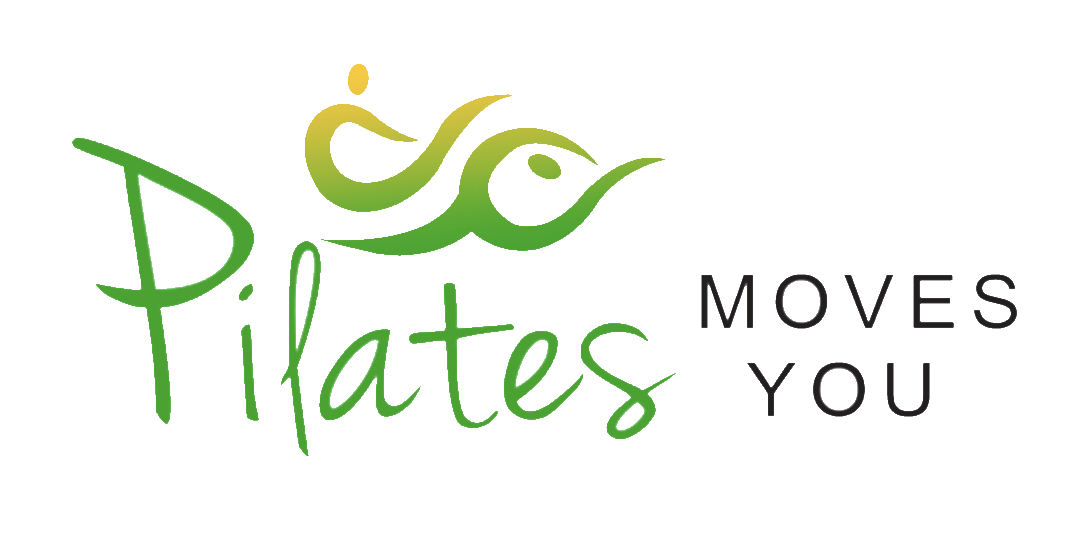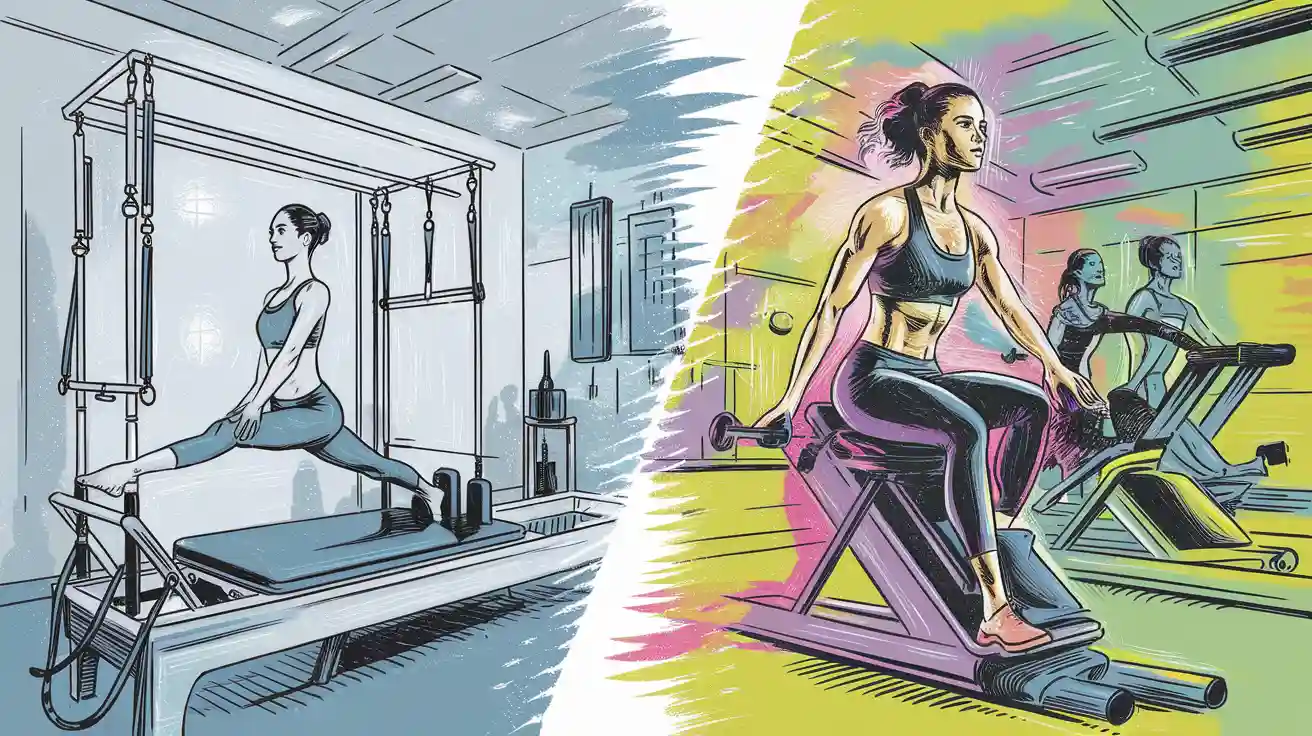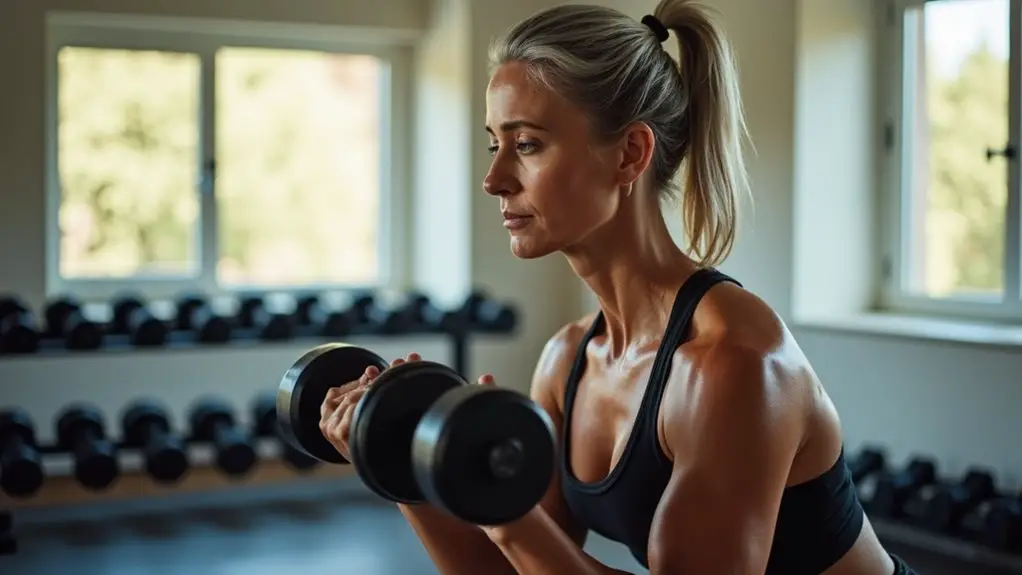Pilates is one of the best workout types that enable you to train your whole body while including almost all of your muscles. The types of exercises that Pilates encompasses are quite different from those you do at the gym, or when you focus your workout on strength, therefore you might feel a bit different after working out. So, why do you feel exhausted after Pilates, and what causes that tiredness through your whole body?
Pilates is focused on almost all your muscles in the body, especially the core and the stabilizer muscles. This is what fatigues your body the most and leaves you feeling tired. Every exercise type will make you tired, however, Pilates is tiring in a quite different way than the usual workouts thanks to its full body focus.
In this article, I will focus on Pilates as a daily workout routine, and I will discuss all of its features and benefits. If you have been doing Pilates for some time, you have probably experienced different soreness in the muscles and wondered whether this is normal. I will try to explain briefly why you might feel strange exhaustion after this type of exercise, and what would be the proper ways to deal with it.
Why Pilates Makes You So Tired?
If you have tried both a Pilates workout and a typical gym workout, you’ll have noticed that the feeling you have afterwards is different.
You might feel tired after the gym, but usually, you just feel soreness in one particular parts of your body, e.g. lifting weights causing your arms to have sore muscles.
When it comes to Pilates exercise you will feel tiredness throughout the whole body and that might seem strange, especially if you’re new to this.
A typical Pilates class focuses on core strength, your Pilates teacher will help you improve your core muscles, usually by employing your own body weight in different positions on a mat, but also by increasing the challenge via a Pilates Reformer.
The physical activity involved in either mat or reformer Pilates can activate the whole body, leading to muscle soreness in areas you didn’t even know had muscles!
In addition to improving your core strength, you will also improve the stabilizer muscles.
What are stabilizer muscles? They’re the muscles your body uses to protect itself from unnecessary or undesired movements. This group of mucles generally go un-noticed, which is why it can come as a shock when they suffer from muscle fatigue and cause you to feel in areas you don’t normally feel.
I’ve sure you’ve heard of the Bicep, but you have probably not heard about Supraspinatus, which is a muscle that protects your shoulder joint. This muscle is responsible for your ability to lift and move your arm without any injury. Therefore, it is always included in the work of the arms.
These lesser known muscles also require exercise, if your regular physical activity is missing them out a Pilates class will help you work out these smaller stabilizer muscles, as well as the ones that are somewhere deeper underneath the larger muscles.
Since you do not usually activate these muscles, it is understandable that after a Pilates session, you will feel exhausted as you will often activate them and place them under a load they’re not use to. They take time to get used to the new movements and tension and the tiredness comes from the muscle recovery process.
If you’re just starting your Pilates practice you’ll discover muscles that you didn’t even know you had, and that is why you experience fatigues at a whole new level.
When you do not know what is causing this tiredness, you might decide to quit and think that this type of workout is not for you. However, you need to be patient and devoted in order to overcome that phase and enjoy Pilates in a new way.
Pilates will help you avoid any kind of injuries, and your body will gain a higher level of flexibility and elasticity. In the beginning, it will be hard and uncomfortable, but the results are astonishing, so you need to give this workout some time. It usually takes 30 sessions* to see the progress your body has achieved, but it takes only 10 to feel better at doing it.
Muscle Soreness After Pilates
As I previously mentioned, the muscle soreness after Pilates is different from after doing other types of exercises. If you are new to Pilates, then you will experience new degrees of soreness, usually the day after the workout. This is quite normal and common, however, you need to check and ensure that there is no injury on some of the muscles, especially if you have not done the proper stretching after exercising.
Good vs. Bad Soreness
As I said above, soreness is a normal thing, and some people experience it every time they work out. This is a good thing, firstly because it means you have done the exercises properly and paved the way for the muscles to grow. Secondly, the soreness might signalize a developed protective mechanism** that will reduce the degree of soreness in the future.
However, soreness might also appear in a negative form. For example, if you have woken up, but you feel like you cannot get out of bed, then it means that you have overdone the exercises. The soreness that does not allow you to do your daily routines freely is not a good sign, and it should not happen that way.
In cases like this, it is better to take some rest and avoid working out until the pain goes away or becomes really mild. If you continue to work out you will just torture your body without any results, meaning that your exercises will be useless.
Sore muscles are a common ailment many athletes experience after a long day of rigorous activity. Luckily, there are many ways to treat sore muscles.
Warm up properly – When warming up, make sure that you perform low intensity movements, followed by medium intensity ones. Then move onto high intensity moves.
Drink enough water – It is essential to drink plenty of water throughout the entire workout. Not only will it hydrate your system, but it will also flush toxins from your body.
Eat soon after Pilates – Your body needs food to help repair and become stronger, eating the right food (protein) will help the recovery and rebuilding process.
Apply an ice pack – Ice can reduce the inflammation that can lead to sore muscles and allow more blood to circulate while healing. Anything frozen can be used, an ice pack, ice cubes, or bag of frozen veg
As you can see, extreme tiredness after Pilates is a common thing, especially if you have tried this type of workout for the first time. However, you should always make sure that your soreness and tiredness are not caused by some injury or overdone exercising since you can compromise the ability of your body for working out in the future.
Sources:
*https://kayahealthclubs.com.au/blog/how-long-does-it-take-to-see-results-from-pilates/
**https://www.livestrong.com/article/479619-soreness-after-pilates/




